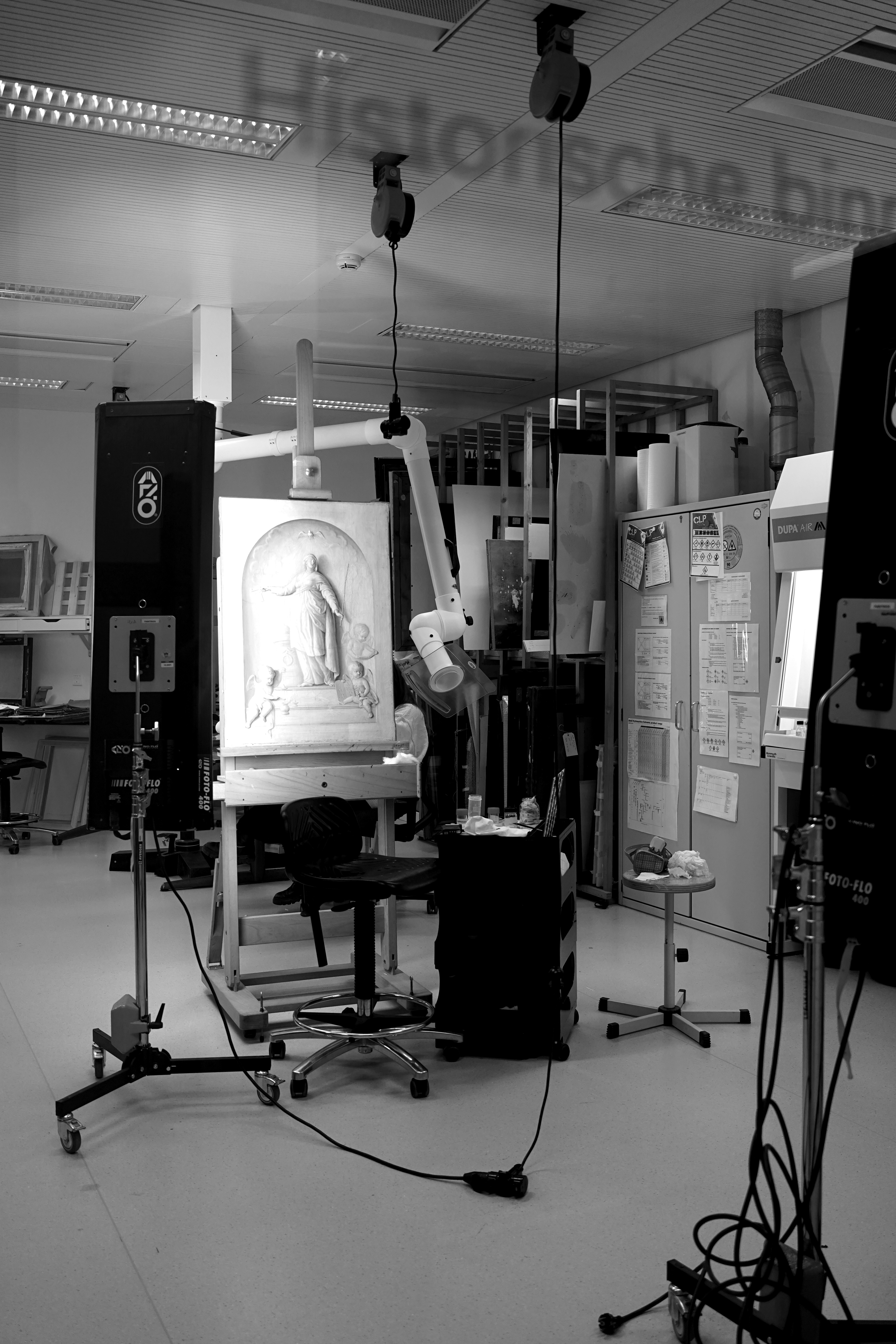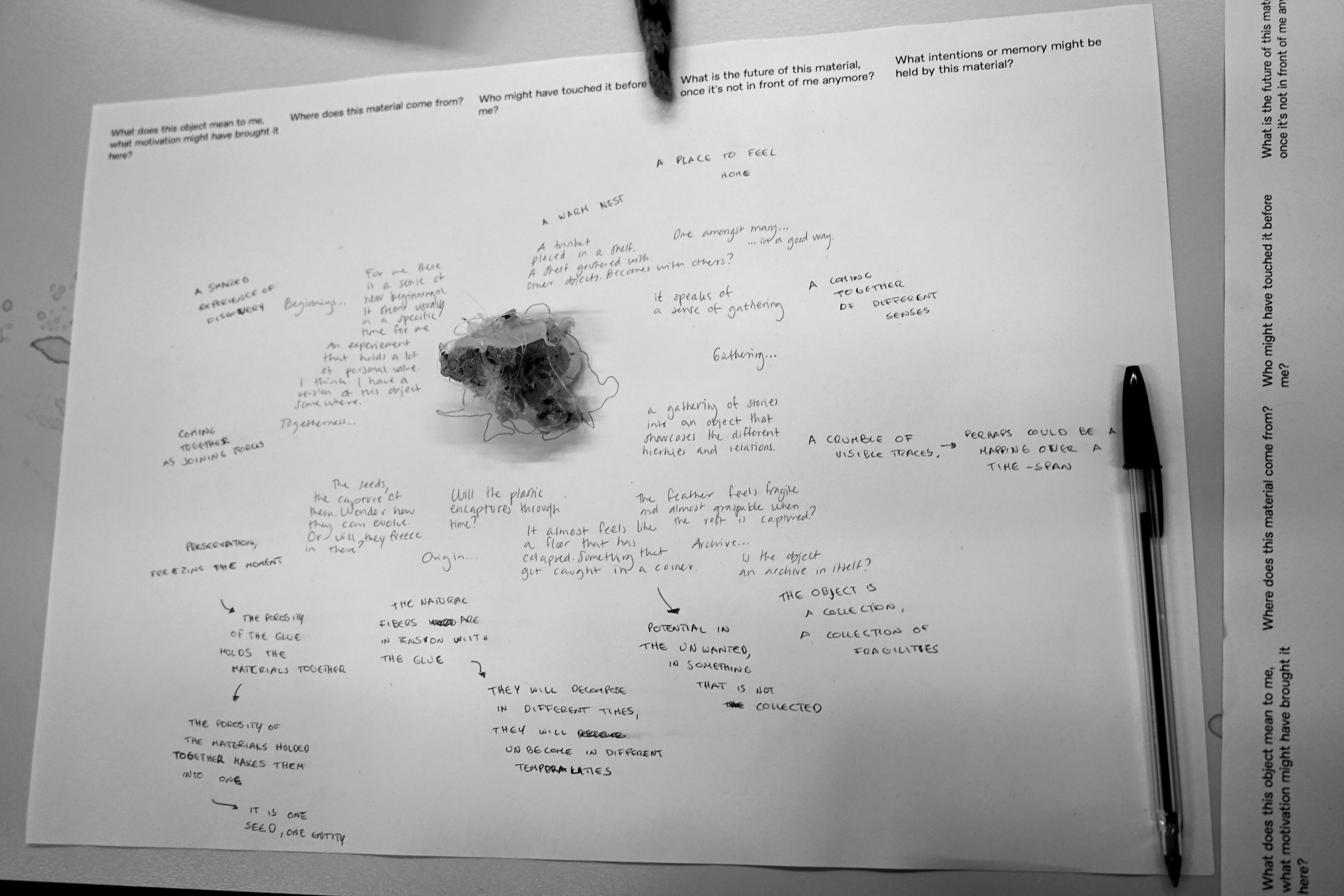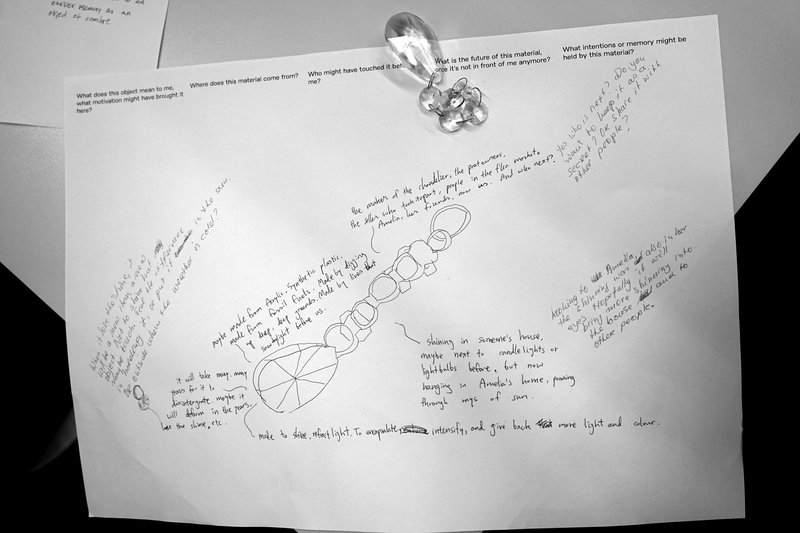chapter
Material Temporalities
Tour of conservation studios of NICAS (The Netherlands Institute for Conservation+Art+Science+) followed by a workshop at the Rijksmuseum’s Atelier Building.
Wednesday, 6 November 2024
The Material Temporalities workshop was organized as part of Practicum Generale and introduced students to the conservation studios and laboratories of NICAS and the Atelier Building of the Rijksmuseum.

The session emerged from a series of preparatory conversations between conservation researchers and members of the Materiality Research Group. A recurring theme was the notion of an artwork’s “material biography”: understanding what it is made of, how its materials can be investigated, and what this discloses about both its origin and afterlife. While conservation professionals often approach objects as historical evidence or time capsules, students were more attuned to the ethical dimensions of materials—especially in light of contemporary environmental crises and questions of social justice. This divergence of perspectives framed the workshop as a space to explore not only points of overlap, but also productive tensions between conservation and contemporary artistic practice.
The planning discussions also emphasized the speculative and political nature of preservation; conservation is never a neutral act, and always involves imagining possible futures for materials and deciding what will endure. From this perspective, the workshop aimed to connect institutional methods of conservation with the students’ own concerns as artists and designers—tracing how legacies are shaped by choices of preservation, omission, and transformation.
The program began with a guided tour through five specialized departments—plastics, modern art, imaging technologies, furniture, and textiles—offering rare insight into the material research that underpins conservation practices. Students encountered different approaches to analyzing and safeguarding artworks, from advanced scientific imaging to hands-on restoration processes.
Experiencing the conservation practices up close served as a foundation for the second part of the session, a workshop that foregrounded questions of preservation, process, and materiality. Together, the tour and workshop created a dialogue between institutional conservation methods and the students’ own artistic practices.
The day opened up an inquiry into the material biography of artworks: what they are made of, how their constituent materials are studied, and what such investigations reveal about an object’s cultural, historical, and environmental contexts. Conservation research emerged here not only as a technical practice but also as a broader philosophical reflection on the ephemerality of art, the ethics of preservation, and the ways in which materiality shapes artistic meaning across time.
In the workshop, students worked with materials they had brought—objects they considered worth preserving, whether found or self-made. Through a sequence of mapping exercises and collaborative reflections, they collectively traced speculative “orbits” around these materials, considering questions of provenance, touch, memory, and future trajectories. This method highlighted how preservation is always also a form of speculation, an imaginative act that projects possible futures for material things.
The discussions circled around a central question: what do we choose to preserve and what do we allow to disappear? By reflecting on their own material experimentations through the lens of conservation, students explored the tension between permanence and impermanence, authorship and process, visibility, and erasure.
By bridging the conservation studio and the classroom, Material Temporalities underscored that conservation practices—while often associated with safeguarding historical heritage—can also serve as a lens for contemporary artistic production and education. The session invited participants to consider their artistic legacies not only in terms of what endures, but also in relation to what is intentionally left to decay, vanish, or transform.

Workshop: Preservation as a form of speculation
- Break out in groups of three
- Take 1 min per person. Tell your group something about the object you brought
- Hand your object to the person to your right, now you all have another object in front of you
- Take the sheet of paper and draw the object in front of you in the middle of the paper
- Draw any direct connection you can imagine that this object might have to the material world. It could be a solid or ephemeral connection, a social or insentient connection, anything you can think of. It can be intuitive and speculative. The goal is to create a little orbit around the object
- Take 10 mins per person. Mapping happens in silence
- Hand over your object and orbit
- You have a new object in front of you that has an orbit around it
- Draw any connections you can think of from the elements in that orbit
- Take 10 mins. Mapping happens in silence
- Hand the map back to the original person
- Take a moment to read and view your material kinship cosmos
- Take 5 mins per person to reflect and ask each any other question you may have. Discuss some of the assumptions implicit in the maps
- Are there any surprises?

Guiding questions for the exercise:
- What does this object mean to me, what motivation might have brought it here?
- Where does this material come from?
- Who might have touched it before me?
- What is the future of this material?
- What intentions or memories might be held by this material?